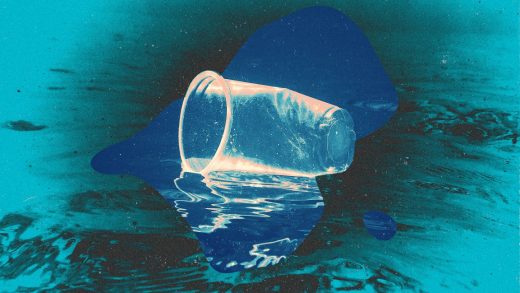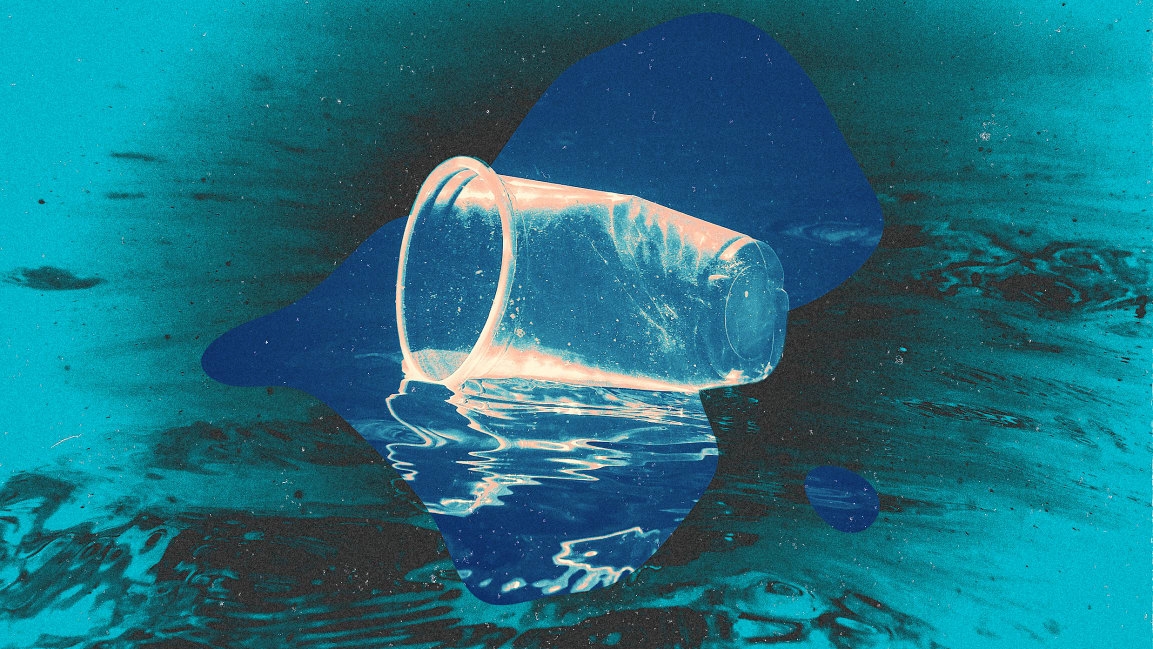Can ocean plastic cleaning projects actually clean all the ocean plastic?
Our oceans have a plastic problem, and relying on tech that aims to collect plastic debris from the ocean’s surface won’t be enough to solve it, according to a new study. With the mass amounts of plastic that get funneled into our oceans from land—between 5 and 13 million tonnes annually—ocean clean-up technologies fall short, and can never catch up. The only way to truly reduce the amount of plastic in the ocean, researchers say, is to stop it from getting there in the first place.
In a study published in Science of the Total Environment this week, researchers at the University of Exeter looked at the ability of floating ocean clean-up tech to actually clean up the ocean. The main problem is that not all ocean waste floats at the top of the water for easy collecting; according to 2014 research, just a tiny percent—269,000 tonnes (in the form of about 5.25 trillion plastic particles)—is at the ocean’s surface. That amount is expected to grow to more than 860,000 tonnes by 2052, by which point experts predict that recycling updates may mean no new plastic pollution is generated (though we’ll still have to contend with all that plastic already in the water).
Using the Ocean Cleanup project as an example—the much-lauded Dutch nonprofit that uses a 2,000-foot-long floating tube to skim the ocean surface for trash, and which aims to cut the Great Pacific Garbage Patch, a mass of 80,000 tonnes of plastic, 50% in five years—the study calculated how long it would take that tech to clean up all surface plastic in the ocean. If 200 devices of that efficiency were running without downtime from 2020 to 2150, researchers estimated they would collect 44,900 tonnes of floating plastic debris—a little over 5% of the total estimated to exist by that year—which would still leave 816,000 tonnes of plastic on the ocean’s surface.
These devices, says study coauthor Jesse F. Abrams of the University of Exeter’s Global Systems Institute and the Institute for Data Science and Artificial Intelligence, unfortunately aren’t all that effective—especially when you factor in their cost to create and maintain. “They can only collect surface (and potentially subsurface) plastic that is larger than 1 millimeter,” he says over email. “A large portion of plastic that enters the ocean either sinks or is broken down to particles smaller than 1mm.”
The Ocean Cleanup team also understands this math, and has invested in river devices, which intercept plastic from entering the ocean in the first place and which the nonprofit says is crucial to its cleanup efforts. The nonprofit estimates it could collect 50,000 to 100,000 kilograms of trash a day this way. River barriers could be more effective than only ocean surface collection, according to the study authors, and would be less expensive to deploy. With about 80% of ocean plastic pollution entering through rivers, a complete halt of that via river barriers could reduce the amount of ocean surface plastic by 462,000 tonnes.
“There is still so much plastic entering the ocean that the cleanup device can only catch a tiny amount of this,” says Sönke Hohn, a study coauthor and researcher at the Leibniz Centre for Tropical Marine Research, over email. “We didn’t want to rubbish the Ocean Cleanup Project with our study. We would rather call for even more initiatives like this because of the large scale of the plastic pollution,” he adds, though it might be more effective, he notes, to use fishing boats and nets rather than expensive passive floating technology—though that would then have an effect on fish and other sea creatures that might get captured.
River barriers don’t do anything for the plastic already in the ocean, though. Unfortunately, we may never remove all our ocean plastic, especially that broken down into microplastics. Even the Ocean Cleanup Project says its cleanup device is the last line of defense; we need to first reduce the production and consumption of single-use plastic. “Now is the time to reduce emissions, and now is the time to collect large plastic before it breaks down to small plastic,” Hohn says. One cleanup device may not save us; we need multiple, coupled with an effort to collect plastic at river mouths and policies to stop plastic production.
(32)



